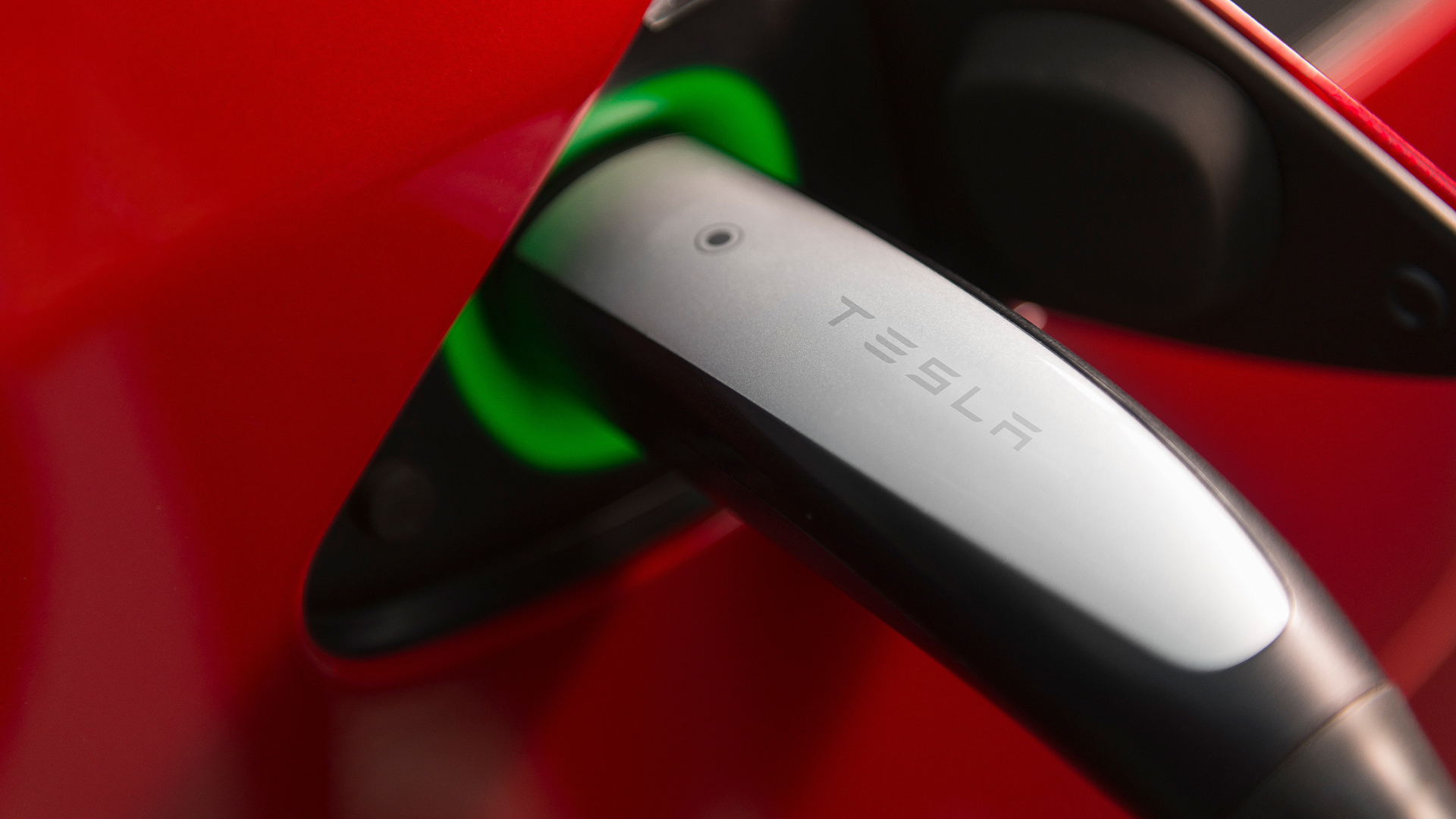

Seven major automakers (BMW, General Motors, Honda, Hyundai, Kia, Mercedes-Benz, and Stellantis) are joining forces to effectively double the size of the current charging network in the United States over the next few years. The joint venture—which has yet to be named, so we’ll just call it JV for now—will begin materializing next year. Chargers deployed on the network will feature both CCS and Tesla’s North American Charging Standard (NACS) connector, which is great for all of the automakers that have recently announced their transition to the smaller connector.
But the even better news is that DC fast charging with a NACS connector is about to get a huge power output jump. Presently, Tesla’s Superchargers output 250 kilowatts of electricity—that’s enough to charge the Model 3 from 10% to 80% in around 25 minutes. The JV’s new charger will supply even more juice to vehicles, topping out at a very respectable 400 kW according to the alliance’s current plans.

“The stations will have a minimum of 350 kW DC high-powered chargers with Combined Charging System (CCS) and North American Charging Standard (NACS) connectors,” a spokesperson for the JV confirmed to The Drive in an email.
Now, 350 kW from the NACS connector isn’t a new concept. While Supercharger V3 stalls only supply up to 250 kW of power right now, output was rumored to be increased up to 324 kW in 2022 (this hasn’t materialized—at least not yet).
It’s also been rumored that Tesla would pump up its next-gen Supercharging V4 stalls to 350 kW of juice for some time. The gossip was all but confirmed earlier this week as planning documents filed in the U.K. list the 350 kW figure officially. However, even these new Superchargers will soon be matched and even out-powered (at least for now) by the JV’s offering which uses Tesla’s own NACS plug.
“We expect long waiting times for 400 kW chargers as this technology is new and in a ramp-up phase,” said the spokesperson for the JV, confirming to The Drive that the NACS plug will also feature 400 kW charging like its CCS counterpart. “In order to quickly establish a network, the JV will start with a focus on 350 kW but increase to 400 kW as soon as market conditions allow a mass rollout.”
Just because the NACS plug can supply 400 kW doesn’t mean that a Tesla can pull up, plug in, and charge at this rate. Part of the charging protocol means negotiating the maximum speed at which a vehicle can accept a charge. For most Tesla vehicles, fast charging caps at around 250 kW in ideal conditions. Some other vehicles that are both equipped with a CCS port and 800-volt charging architecture (like the Hummer EV, Porsche Taycan, and Lucid Air) are able to accept higher charge rates, like the 350 kW supplied by Electrify America’s “Hyper Fast” chargers.

Who really wins in this scenario are owners of vehicles that will be equipped with NACS ports and with gigantic battery packs that need lots of power very quickly in order to get back onto the road. For example, there’s the Hummer EV and its massive 200-kWh battery. Should the beluga of a truck make the move to NACS with the rest of GM’s EV fleet in 2025, the super-alliance’s chargers will be ready to deliver at full speed.
It’s possible that Tesla’s upcoming Cybertruck may also make use of an 800-volt charging architecture capable of accepting a 350-kW charge rate (or higher, as Elon Musk has also noted the possibility for the Cybertruck to share the Megawatt charging tech from the Semi). Tesla has previously noted that it was exceptionally expensive to move existing vehicle platforms to 800-volt architecture, but recently, Musk said that the “Cybertruck has a lot of new technology in it”—possibly even a new battery and charging architecture able to accept the full 350 kW offered by the V4 Superchargers and the JV’s NACS-equipped charging stations.
Much like the cost and complexity of the Cybertruck’s potential tech, the spokesperson for the super-alliance mentioned that it likely won’t be possible to just flip a switch and turn on 400 kW charging, either.
“To be clear, an existing 350 kW unit may not be able to do 400 kW unless it’s replaced with a 400 kW unit later,” said the spokesperson. “As it gets closer to 2030, the JV will aim for having the best charging power available on the market and technological state-of-the-art charging at all times. So, the network will not necessarily remain static as technology advances.”
It looks like the charging war won’t just be fought at the battery. Sure, solid-state batteries are promised to be the future, but charging infrastructure also needs to also supply a fast amount of power very quickly as well. The biggest downside, of course, is the possibility of quickly degrading lithium-ion battery life with frequent, high-output charging. But hey—at least it will be fast, right?
Got a tip or question for the author? Contact them directly: rob@thedrive.com